Chinese is by far one of the most influential languages nowadays with China becoming a major political and economic player and more people learning the language. But what exactly makes it such an important language with a beautiful writing system? Here’s everything you should know about Chinese writing.
The History of Chinese Writing
Chinese writing uses a logographic writing system with Chinese characters being referred to as hanzi or “Han characters”. Interestingly, until the 18th century, over half of the world’s books were written in Chinese making the Chinese writing system one of the greatest and most influential ones in history.
The system originated as drawings and evolved into symbols used today. It is unknown when Chinese writing was first used, but it is certain that it started being developed in the early 2nd millennium BC. Both Japanese and Korean writing systems were influenced by it – Japanese has kanji while Korean has certain characters that are similar to those in Chinese.
What Makes Chinese Writing Different?
Chinese has thousands of hanzi but learning all of them is not necessary to achieve a decent level of fluency. It is estimated that learning around 4,000 Mandarin characters is enough to become literate, but that can still be challenging for many learners.
Phoebe Miller, an expert from the writing services reviews site Writing Judge, explains, “At their core, Chinese characters are like pictographs. Through the centuries, the Chinese would improve and innovate the writing system which evolved according to the times. This made Chinese writing a true art form and somewhat like an aesthetic reflection of the Chinese society through the ages.”
Compared to English, the Chinese language has a very different relationship between its written and oral forms. Many different Chinese words are expressed by identical sound patterns while having different visual representations. In other words, they may sound the same but will be written differently.
Because Chinese has so many homophones, literate Chinese speakers often draw characters in the air while speaking so as to distinguish these homophones. Luckily, there is no confusion of such kind when it comes to written text which is something that is relatively common in English.
What Are the Main Types of Chinese Characters?
All Chinese characters are traditionally divided into six different types called liu shu or the “six scripts”. Some of these are more common while others are used less often:
- Xingsheng (形声字): The most common type is xingsheng which is a type of character that combines a semantic element (aka a radical) and a phonetic element that reminds the reader of the word’s pronunciation.
- Xiangxing (象形字): The xiangxing characters were originally pictographs with a semantic character initially represented by a picture.
- Zhishi (指事字): The zhishi characters are the ones that were intended to represent logical or abstract terms.
- Huiyi (会意字): The huiyi characters are formed by a combination of elements thought to be logically associated.
- Zhuanzhu (专注字): The zhuanzhu characters are modifications or distortions of characters that form new characters usually with related meanings.
- Jiajie (假借字): The jiajie characters are either ones borrowed from others or mistaken to be others (e.g. from words with different meanings but similar pronunciation).
How Is Chinese Written?
Just like Japanese and Korean, Chinese can be written either vertically or horizontally. Marcus Frost, an expert from the writing services reviews site Best Writers Online, explains, “East Asian languages consist of disconnected syllabic units written in an imaginary square frame. This lets you easily write either vertically or horizontally.”
Traditionally, Chinese is written vertically in columns. The first column is placed on the right side of the page and the text starts on the left. However, nowadays, Chinese has adopted the Western style of writing with a layout of horizontal lines written from left to right and top to bottom. Besides such differences between traditional and modern writing, there are also five different styles of Chinese calligraphy:
- Seal Script (篆书): The oldest style is the seal script, and while it is still in use, most people can’t read it anymore. The seal script is considered an ancient one and is generally not used outside of carved seals or calligraphy where its name comes from.
- Clerical Script (隶书): The clerical script is a style where Chinese characters usually look “flat” and are wider than those in the seal script. That being said, the clerical script has its own versions where characters are either wide or square.
- Semi-Cursive Script (行书): The semi-cursive script is quite similar to normal handwriting where strokes and characters run into each other to an extent. Thus, characters are less angular and are instead rounder and bolder.
- Cursive Script (草书): The cursive script uses numerous simplifications and ligatures which requires the reader to have specialized knowledge to understand it. The characteristics of the semi-cursive script are amplified here.
- Regular Script (正书/楷书): The regular script is the newest of all the styles and developed from an early-period semi-cursive form of clerical script. It is the most common style used today in writings.
Why Should You Learn Chinese?
Chinese has a very beautiful writing system, but that’s not the only reason why you should learn this language. Here are some reasons why you should learn Chinese:
- Chinese is currently the second most widely spoken language in the world with 918 million native speakers of Mandarin Chinese and 199 million non-native speakers. It is topped only by English.
- Knowing Chinese allows you to fully experience a completely different culture. China is home to stunning architecture, delicious and varied cuisine, teachings of Daoism, numerous ancient works of literature, and so much more.
- Learning new languages develops your brain and opens new economic opportunities for you. Considering the role China plays in the global economy, it is no wonder that knowing Chinese will allow you to apply to many jobs you only dreamt about before.
Final Thoughts
At the end of the day, there are numerous reasons why Chinese writing is so beautiful and why you should learn Chinese. The beauty of this language and its writing system lies in the nuances and the many details you should learn to be able to understand it. But even if it seems overwhelming at first, if you are passionate about it, learning Chinese will be an exciting endeavor and a valuable achievement.

GUEST POST
by Wanda Lafond
Wanda Lafond is a professional content writer, copywriter, content strategist, and communications consultant. She started young with her writing career from being a high school writer to a university editor, and now she is a writer in professional writing platforms— her years of expertise have honed her skills to create compelling and results-driven content every single time.








0 Comments